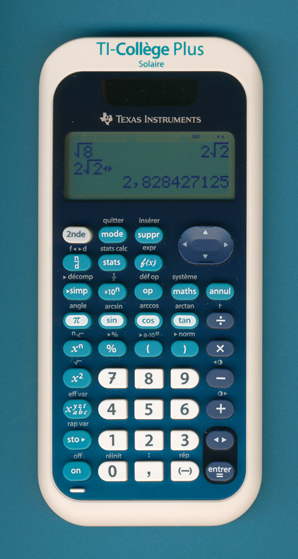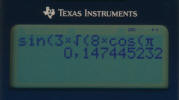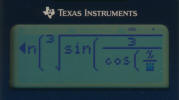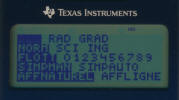
DATAMATH CALCULATOR MUSEUM
 |
DATAMATH CALCULATOR MUSEUM |
Texas Instruments TI-Collège Plus Solaire (Design Validation Tests)
| Date of introduction: | December 17, 2012 Available: Feb. 21, 2013 |
Display technology: | LCD dot matrix |
| New price: | Display size: | 4 * 16 characters (5 * 19 for menus) |
|
| Size: | 6.5" x 3.1" x 0.6" 166 x 79 x 16 mm³ |
||
| Weight: | 3.7 ounces, 104 grams | Serial No: | K-DVT-239 |
| Batteries: | Solar cells + CR2032 | Date of manufacture: | year 2012 |
| AC-Adapter: | Origin of manufacture: | China (K) | |
| Precision: | 13 | Integrated circuits: | |
| Memories: | 7 | ||
| Program steps: | Courtesy of: | Joerg Woerner |

![]() Texas
Instruments replaced in France the original TI-Collège
Plus in 2013 with this TI-Collège Plus Solaire sporting the design of the
TI-34 MultiView introduced already in 2008.
Texas
Instruments replaced in France the original TI-Collège
Plus in 2013 with this TI-Collège Plus Solaire sporting the design of the
TI-34 MultiView introduced already in 2008.

 The TI-Collège Plus
Solaire features a dot
matrix display with 31 * 96 addressable pixels allowing the calculator to
display equations as they would be printed in a text book.
The TI-Collège Plus
Solaire features a dot
matrix display with 31 * 96 addressable pixels allowing the calculator to
display equations as they would be printed in a text book.
 The TI-Collège Plus
is the first calculator in the new MultiView series sporting for the "mode
menue" a total of 5 lines by 19 characters on the small graphing screen.
Both the TI-30XS MultiView
and the TI-34 MultiView used just 4 lines.
The TI-Collège Plus
is the first calculator in the new MultiView series sporting for the "mode
menue" a total of 5 lines by 19 characters on the small graphing screen.
Both the TI-30XS MultiView
and the TI-34 MultiView used just 4 lines.
In addition to this
so called "AFFNATUREL / MathPrint" mode the calculator sports a TI-Collège compatible "AFFLIGNE
/ Classic" mode.
Compared with the original TI-Collège, we notice some major improvements:
| •
AFFLIGNE (compatible with TI-Collège) and AFFNATUREL Mode • EOS with 8 pending operations and 23 levels of parentheses • 7 memory variables x, y, z, t, a, b, c • Data editor and list formulas: 3 lists, each up to 42 items • Function table • Toggle key fractions and decimals • Equation entries up to 80 digits |

 Dismantling this TI-Collège Plus
Solaire with the serial number K-DVT-239 (K for
Kinpo electronics, Inc. and DVT
for Design Validation Test) reveals a pretty common
construction with two printed circuit boards (PCB's). The main PCB hides the
single-chip calculating circuit under a small protection blob of black epoxy and
drives the graphing display with a heat sealed fine-pitch connector. The
keyboard makes use of a much simpler second PCB and a heat sealed connector,
too.
Dismantling this TI-Collège Plus
Solaire with the serial number K-DVT-239 (K for
Kinpo electronics, Inc. and DVT
for Design Validation Test) reveals a pretty common
construction with two printed circuit boards (PCB's). The main PCB hides the
single-chip calculating circuit under a small protection blob of black epoxy and
drives the graphing display with a heat sealed fine-pitch connector. The
keyboard makes use of a much simpler second PCB and a heat sealed connector,
too.
If you have additions to the above article please email: joerg@datamath.org.
© Joerg Woerner, January 19, 2013. No reprints without written permission.